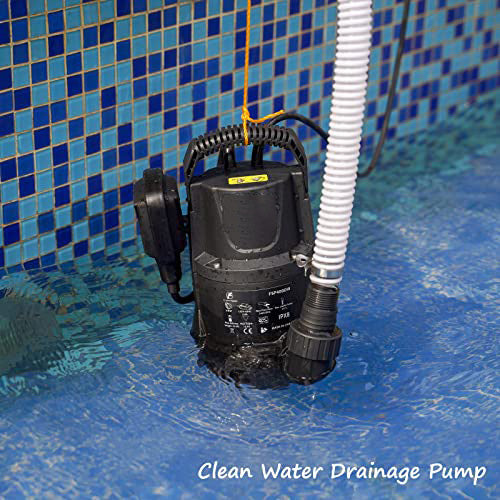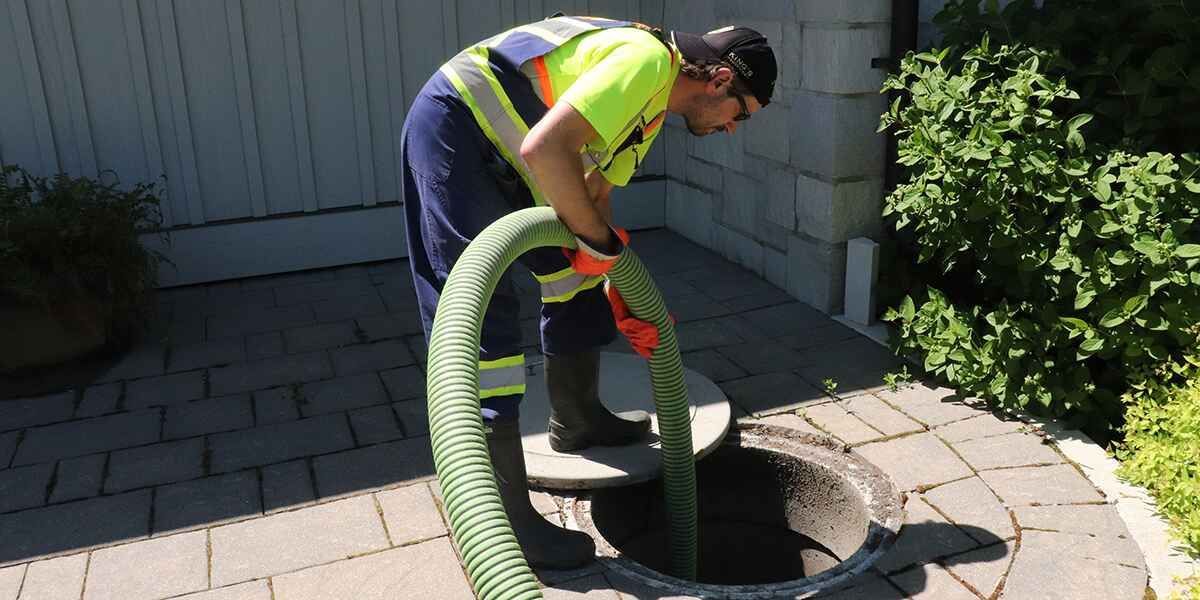We've stumbled upon the article pertaining to Steps to Cleaning Your Sump Pump Properly down the page on the web and figured it made perfect sense to quickly share it with you on this site.

Sump pumps are essential elements in numerous homes, specifically in locations susceptible to flooding or too much dampness. They help stop water damage by successfully eliminating excess water from cellars or crawl spaces. However, like any other appliance, sump pumps need routine maintenance to ensure they operate successfully when needed one of the most. Cleaning your sump pump is an important part of its upkeep, and recognizing exactly how to do it effectively can save you from costly repair work and prospective calamities.
Intro
Preserving a clean sump pump is vital for its correct functioning and longevity. Overlooking this necessary task can lead to obstructions, breakdowns, and inevitably, water damages to your residential or commercial property. Therefore, discovering just how to clean a sump pump is essential for property owners who count on these devices to keep their basements dry and protected.
Recognizing the Sump Pump
Prior to diving into the cleaning process, it's important to have a basic understanding of how a sump pump functions. Typically installed in a pit or container listed below the basement flooring, a sump pump includes several vital components, including a pump, a float button, and a discharge pipe. When water builds up in the pit, the float button turns on the pump, which then pumps the water out through the discharge pipe, far from the structure's foundation.
Indicators of a Dirty Sump Pump
Recognizing when your sump pump needs cleaning is important for preventing possible malfunctions. Some common signs that indicate a filthy sump pump consist of unusual noises throughout operation, minimized water circulation, and noticeable debris in the pit. If you observe any of these symptoms, it's essential to clean your sump pump without delay to avoid any more problems.
Getting ready for Cleaning
Prior to you begin cleansing your sump pump, it's necessary to take some security preventative measures. Start by shutting off the power to the pump to prevent any electrical accidents. In addition, wear suitable safety gear, such as gloves and goggles, to shield on your own from dirt, particles, and potential pathogens.
Step-by-step Guide to Cleaning a Sump Pump
Shutting Off the Power
Begin by disconnecting the power supply to the sump pump to prevent any type of accidents while cleaning.
Getting Rid Of Particles and Dust
Utilize a container or a scoop to eliminate any kind of noticeable particles, dust, or sediment from the sump pit. Dispose of the particles effectively to avoid it from blocking the pump or the discharge pipe.
Cleaning the Pump and Drift Switch
Once the pit is free from debris, carefully remove the pump from the pit. Inspect the pump and the float button for any kind of indicators of damages or wear. Utilize a soft brush or cloth to cleanse the surface areas and get rid of any kind of collected gunk.
Purging the System
After cleansing the pump and float button, flush the sump pit with clean water to remove any staying dirt or sediment. This will assist ensure that the pump runs efficiently and efficiently.
Looking For Correct Functioning
Before reinstalling the pump, execute a quick test to ensure that the float switch turns on the pump properly. Put some water right into the sump pit and observe the pump's procedure. If everything is operating appropriately, you can reconstruct the pump and reconnect the power supply.
Maintenance Tips to Keep Your Sump Pump Clean
In addition to regular cleaning, there are several upkeep suggestions you can comply with to maintain your sump pump in optimal problem:
Conclusion
Cleansing your sump pump is a crucial facet of its maintenance and makes sure that it runs properly when you need it one of the most. By following the actions described in this overview and incorporating regular maintenance into your routine, you can extend the life-span of your sump pump and secure your home from water damage.
6 STEPS ON HOW TO CLEAN A SUMP PUMP PROPERLY
UNDERSTANDING SUMP PUMPS
Your sump pump plays a crucial role in protecting your home by managing and removing excess water. It primarily functions as a “shield”, guarding your basement against the damaging effects of water accumulation. The pump is housed in a sump pit in the lowest part of your basement, and its job is to pump out any water that collects there.
During heavy rainfalls or when snow melts rapidly, water can infiltrate your basement, posing potential risks like flooding, structural damage, and harmful mold growth. Here, the sump pump springs into action, pumping out the intruding water and directing it away from your home.
SAFETY FIRST
Before cleaning, remember to prioritize safety. Disconnect the sump pump from the power source to prevent any accidental electric shocks. Also, wear sturdy gloves to protect your hands from any sharp or dirty components within the pump.
REMOVE THE SUMP PUMP
After ensuring your safety, the next step is to remove the sump pump from its pit. Doing this might require careful maneuvering as you don’t want to damage any pump components. Once removed, clean the sump pit to remove any accumulated debris or sludge.
INSPECT THE PUMP
Inspect the pump for any visible signs of wear or damage. Check the power cord, float switch, and impeller housing. If any components look worn out or damaged, consider replacing them to ensure optimal performance.
CLEAN THE PUMP
Thoroughly clean the pump with warm, soapy water. Make sure to rid it of any dirt, gravel, or other debris that might impede its performance. You can use a toothbrush to clean the small, hard-to-reach parts of the pump.
REINSTALL THE SUMP PUMP
Reinstall the pump into the sump pit Make sure it’s positioned correctly to remove the water effectively Once it’s back in place, reconnect it to the power source TEST THE PUMP
Finally, pour some water into the pit to ensure the pump works correctly. It should start automatically and begin pumping out the water; if it doesn’t, check the power source and the positioning of the pump.
Remember, while cleaning your sump pump is an essential part of home maintenance, hiring a professional plumber for a thorough inspection and cleaning at least once a year is also important. This will ensure that your pump is in optimal condition, ready to protect your home from potential water damage.
BEST PRACTICES FOR CLEANING SUMP PUMP DISCHARGE PIPES
Regular Inspection: Regularly inspect your discharge pipes, especially during heavy rainfall or snowmelt periods. Look for any signs of blockage or damage. Early detection of problems can prevent serious issues down the line. Periodic Cleaning: Over time, sediment and debris can accumulate in the discharge pipes, impeding the flow of water. Regular cleaning helps keep the pipes clear and functioning efficiently. You can use a high-pressure water jet to effectively clean the pipes. Insulation During Winter: In colder climates, discharge pipes can freeze, blocking the outflow of water. Protect your discharge pipes from freezing temperatures by insulating them with foam pipe insulation. This will ensure the sump pump can continue to discharge water even in freezing conditions. Proper Positioning: The discharge pipe should be positioned to direct water away from your home’s foundation. Improper positioning can lead to water seeping back into the basement. Ensure the pipe is long enough and angled correctly. Installation of a Check Valve: A check valve prevents water from flowing back into your sump pit after the pump has pushed it out. Installing a check valve helps maintain the efficiency of your sump pump and reduces the risk of flooding. Minimize Pipe Turns: Every curve or turn in the discharge pipe can decrease the efficiency of water flow. By minimizing turns and bends in your discharge pipe, you can increase the efficiency of your sump pump. https://www.fullspeedplumbing.com/how-to-clean-a-sump-pump-properly9999/

Hopefully you enjoyed reading our topic on How to Care for Your Sump Pump. Many thanks for finding the time to browse our post. Do you know another individual who is curious about the topic? Take a moment to share it. I take joy in your readership.
Explore Now